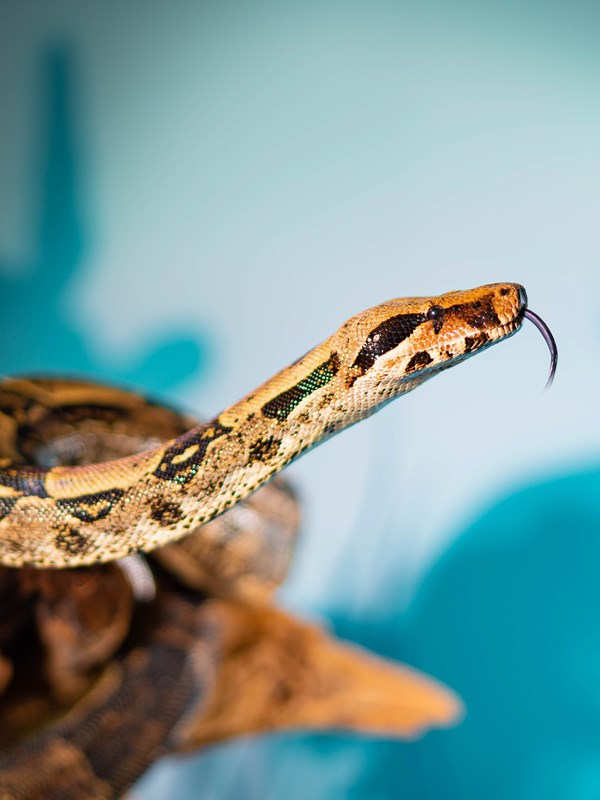
Colombian Boa
Scientific Name Boa constrictor
Native To Central America and northern South America
Habitat Rainforests, dry tropical deserts, and agricultural areas
Diet Carnivore: rats, mice, amphibians, snakes, birds, and small mammals
Size and Age Up to 4.3 m (14 ft) long; average lifespan of 20-30 years
Natural History
The Colombian boa is also known as the common boa or boa constrictor. It’s a non-venomous snake famous for its method of subduing prey—squeezing, or constricting it to death. This particular species is one of the longest snakes in the world.
Colombian boas are generally docile snakes. In the wild, they’re solitary reptiles, preferring to spend their days in tree limbs, hollow logs and abandoned mammal burrows.
Vulnerable

Conservation Status
Some populations of Colombian boa have come under threat from hunters seeking their skins and meat. They also face habitat loss from urban and agricultural development. Boa constrictors have also been overly collected for the pet trade.
Interesting Facts
- Males are smaller than females.
- A boa kills its prey by squeezing it to death with its powerful coils. Once prey is suffocated, the boa constrictor consumes it whole.
- Boas aren't constant eaters; in some cases a large meal can sustain a boa for up to a month.
- Boa constrictors grow quickly, and shed their skin at regular intervals (every 1-2 months). They continue to grow once they have reached maturity, but at a slower rate.
- Boa constrictors have small, hooked teeth that they use to grab and hold prey. If their teeth fall out or become damaged, they can regrow them.
